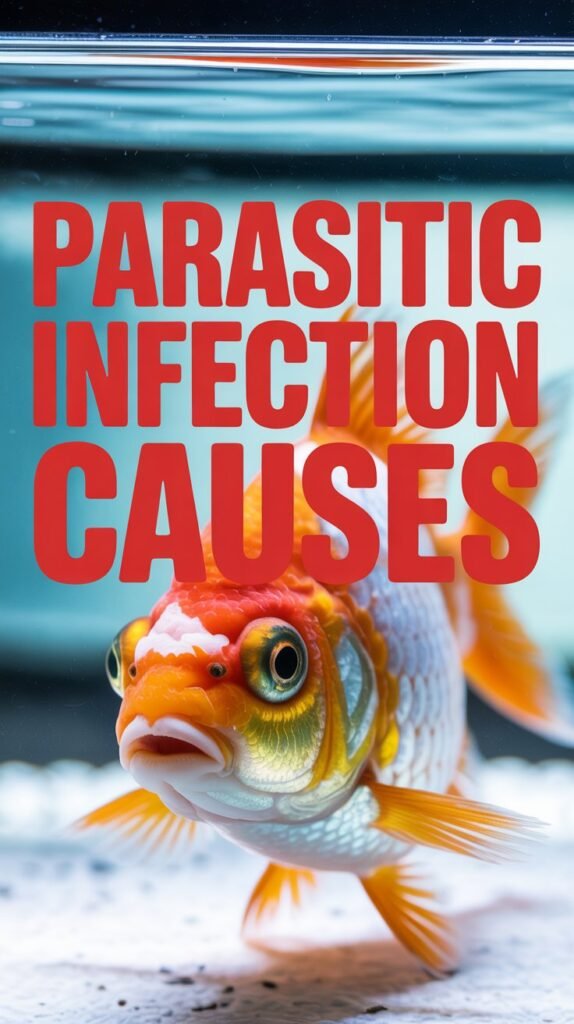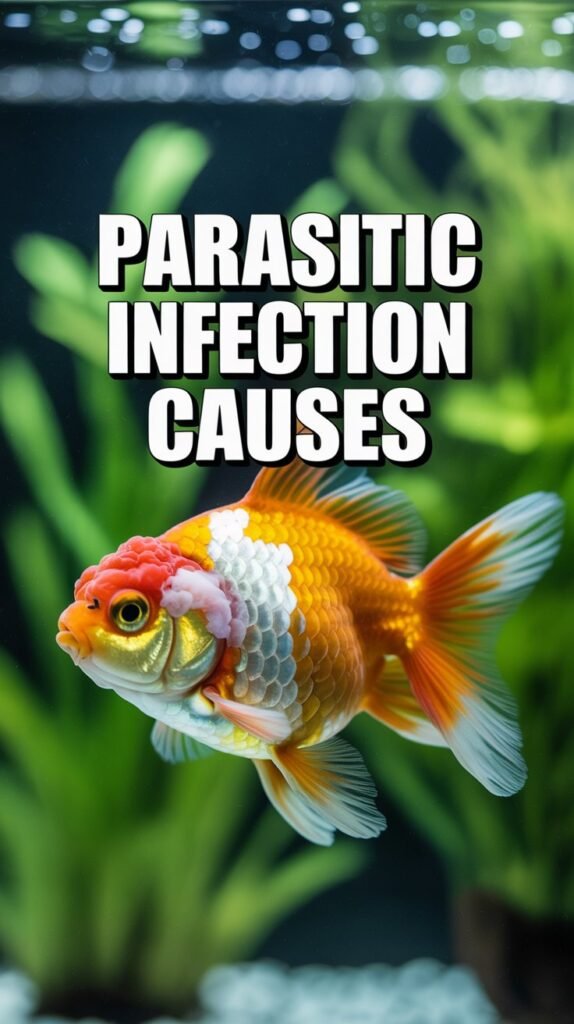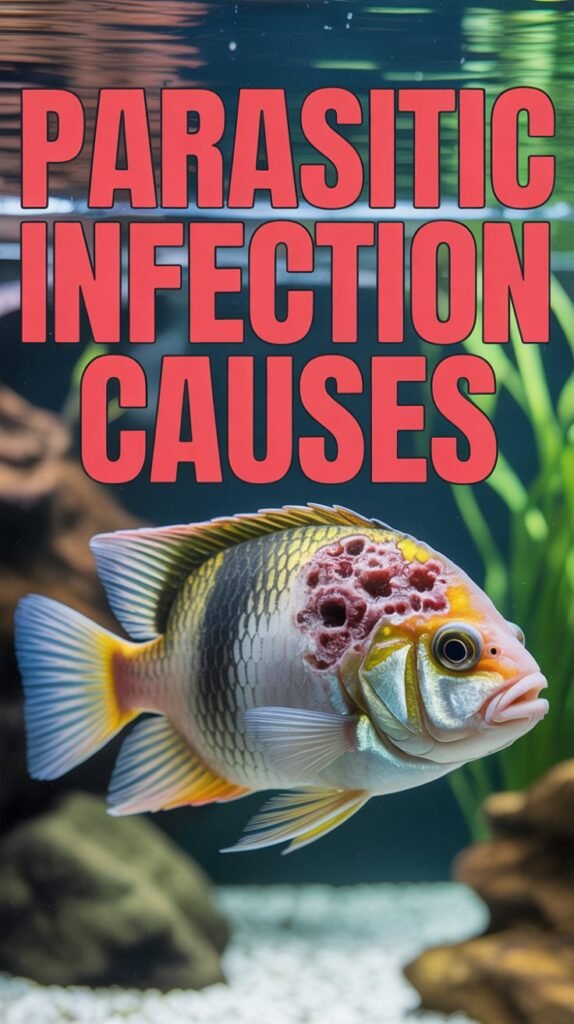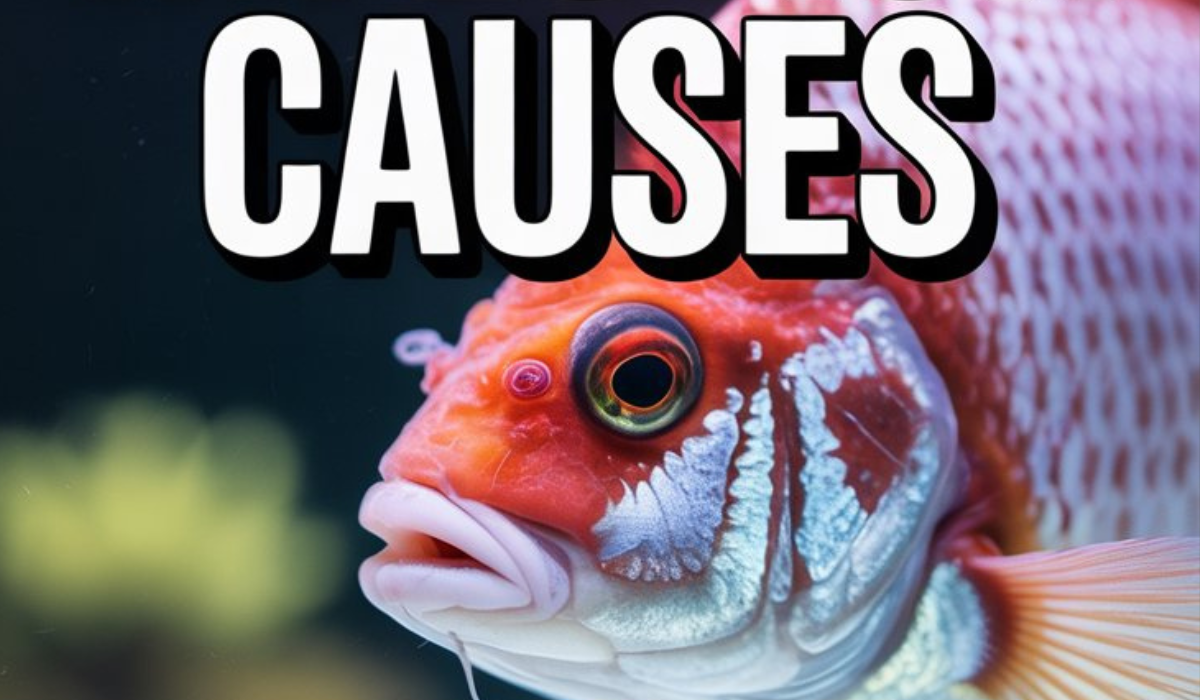Maintaining a healthy aquarium requires more than just clean water and proper feeding. One of the biggest challenges faced by aquarists is dealing with fish bacterial infections, which can spread quickly and devastate an entire tank if left untreated. These infections are often caused by poor water quality, stress, or injuries that weaken a fish’s immune system.
In this complete guide, you’ll learn everything you need to know about fish bacterial infections — their causes, symptoms, types, treatment options, and most importantly, how to prevent them.
What Are Fish Bacterial Infections?
A bacterial infection in fish occurs when harmful bacteria multiply and invade a fish’s body tissues. In a healthy aquarium, both beneficial and harmful bacteria coexist. However, when the balance is disturbed — usually by poor water quality or stress — pathogenic bacteria like Aeromonas, Pseudomonas, and Flavobacterium can proliferate and cause infections.
These infections can affect the skin, fins, mouth, gills, and internal organs, leading to visible sores, ulcers, or behavioral changes. If not identified early, bacterial infections can spread to other fish in the aquarium or pond, resulting in mass outbreaks.
Common Causes of Fish Bacterial Infections

Understanding the causes of bacterial infections in fish is the first step toward prevention. Below are the main contributing factors:
1. Poor Water Quality
The number one cause of bacterial outbreaks is dirty or unbalanced water. High ammonia, nitrite, and nitrate levels can stress fish, weakening their immune systems. Additionally, decaying organic matter like uneaten food or dead plants encourages bacterial growth.
2. Overcrowding
Too many fish in a single tank increases waste, oxygen depletion, and aggression. Overcrowded conditions make it easier for diseases to spread and harder for individual fish to recover.
3. Stress
Stress suppresses a fish’s immune response, making it more susceptible to infections. Stress can result from factors like sudden temperature changes, poor diet, aggressive tankmates, or improper handling.
4. Injuries or Open Wounds
Scratches, bites, or fin nips create entry points for bacteria to invade. This is common when fish are housed with incompatible species or sharp decorations.
5. Improper Diet
A lack of essential nutrients weakens fish over time. Feeding low-quality or expired food can also introduce harmful bacteria directly into the tank.
6. Contaminated Equipment or New Fish
New fish, plants, or equipment introduced without proper quarantine can bring bacteria into a healthy aquarium. Always disinfect equipment and quarantine new additions for at least two weeks.
Types of Bacterial Infections in Fish
Fish bacterial infections can be external, affecting the body surface, or internal, attacking the organs. Here are some of the most common types:
1. Fin Rot
- Caused by: Aeromonas hydrophila or Pseudomonas fluorescens
- Symptoms: Frayed or disintegrating fins, redness, and inflammation at the fin base.
- Common in: Fish kept in dirty or overcrowded tanks.
- Treatment: Frequent water changes, salt baths, and antibacterial medications.
2. Columnaris (Cotton Wool Disease)
- Caused by: Flavobacterium columnare
- Symptoms: White, cotton-like patches on the skin or mouth, frayed fins, and ulcers.
- Treatment: Antibiotics like oxytetracycline or kanamycin, and improving water conditions.
3. Dropsy
- Caused by: Internal bacterial infections (often Aeromonas)
- Symptoms: Swollen body, raised scales, bulging eyes, and lethargy.
- Treatment: Difficult to cure; use broad-spectrum antibiotics and maintain pristine water.
4. Ulcer Disease
- Caused by: Aeromonas salmonicida
- Symptoms: Open sores or red patches on the fish’s skin, loss of scales.
- Treatment: Topical antiseptics and antibiotic-laced food.
5. Gill Disease
- Caused by: Flavobacterium branchiophilum
- Symptoms: Rapid breathing, clamped fins, and inflamed gills.
- Treatment: Salt baths, antibacterial water treatments, and improved aeration.
6. Mouth Rot (Mouth Fungus)
- Caused by: Flavobacterium columnare or Aeromonas species
- Symptoms: White or grayish patches around the mouth, difficulty eating.
- Treatment: Antibacterial medications and disinfection of tank surfaces.
Symptoms of Bacterial Infections in Fish

Recognizing early warning signs can save your fish before the infection spreads. Look out for these physical and behavioral symptoms:
Physical Symptoms
- White or red patches on the skin
- Frayed fins or tail
- Swollen abdomen (bloating)
- Popped-out eyes (exophthalmia)
- Cotton-like growths on the body or mouth
- Open sores or ulcers
- Excessive mucus or cloudy slime on the body
Behavioral Symptoms
- Lethargy or listlessness
- Loss of appetite
- Rapid or labored breathing
- Hiding or erratic swimming
- Scraping body against tank surfaces (flashing)
Early detection is crucial. Once internal organs are affected, recovery becomes much more difficult.
How to Diagnose Fish Bacterial Infections
Diagnosis can be done through visual observation or laboratory tests (for professional setups).
1. Visual Examination
Most home aquarists identify infections based on appearance. For instance, fin rot and ulcers are easy to spot.
2. Microscopic or Laboratory Analysis
In professional aquaculture, bacterial smears and water samples are examined under a microscope to identify specific pathogens.
3. Water Testing
Testing ammonia, nitrite, and pH levels can reveal underlying water issues contributing to infection.
Treatment for Fish Bacterial Infections
1. Isolate Infected Fish
Move infected fish to a quarantine tank to prevent the spread of bacteria. Use separate nets and tools to avoid cross-contamination.
2. Improve Water Quality
Perform a 50% water change, clean the substrate, and ensure your filter is working efficiently. Maintaining stable water parameters is essential for recovery.
3. Use Antibacterial Medications
Common medications include:
- Kanamycin
- Oxytetracycline
- Erythromycin
- Maracyn or Maracyn-2
Follow dosage instructions carefully, as overdosing can harm beneficial bacteria and fish.
4. Salt Baths
For freshwater fish, adding aquarium salt (1–2 tablespoons per gallon) can reduce stress and kill some bacteria. Avoid using salt for salt-sensitive fish species.
5. Medicated Fish Food
If fish are still eating, feed antibiotic-laced food to combat internal infections. Combine this with external treatment for best results.
6. Temperature Control
Some bacteria thrive in warmer water. If possible, lower the temperature by 2–3°C to slow bacterial growth — but only if your fish species can tolerate it.
7. Remove Dead or Decomposing Matter
Dead fish or decaying plants are breeding grounds for bacteria. Remove them immediately and clean the aquarium thoroughly.
Natural Remedies for Mild Infections

For early or mild infections, natural treatments can be effective:
- Garlic extract: Boosts fish immunity and has mild antibacterial properties.
- Indian almond leaves: Release tannins that act as natural disinfectants.
- Aloe vera extract: Can promote skin healing and reduce inflammation.
- Tea tree oil (Melafix): Mild antibacterial used for minor wounds and fin damage.
However, these should supplement — not replace — proper medication in severe infections.
Preventing Fish Bacterial Infections
Prevention is always better than cure. Follow these steps to keep your aquarium bacteria-free:
1. Maintain Excellent Water Quality
- Perform regular partial water changes (25–30% weekly).
- Use a reliable filtration system to remove waste.
- Monitor ammonia, nitrite, and pH levels using test kits.
2. Avoid Overfeeding
Uneaten food decomposes and fosters bacterial growth. Feed only what your fish can consume within 2–3 minutes.
3. Quarantine New Fish
Always quarantine new arrivals for 14–21 days to ensure they’re not carrying bacteria.
4. Disinfect Equipment
Clean nets, siphons, and decorations with mild bleach or aquarium-safe disinfectants before reuse.
5. Avoid Overcrowding
Provide adequate space based on fish species and size to minimize stress and aggression.
6. Use a Balanced Diet
Feed high-quality, varied foods to boost fish immune systems. Include live, frozen, or vitamin-enriched foods for better health.
7. Monitor Temperature and Oxygen
Keep the tank temperature stable and ensure proper aeration. Fluctuations can stress fish and promote infections.
When to Seek Professional Help
If your fish do not improve after 3–5 days of treatment, or if multiple fish show symptoms, consult an aquatic veterinarian. They can perform bacterial cultures and recommend stronger or targeted antibiotics.
Long-Term Recovery and Care
After treatment:
- Continue water changes every few days.
- Add beneficial bacteria supplements to restore tank balance.
- Observe fish behavior and appetite daily.
- Gradually reintroduce quarantined fish to the main tank after complete recovery.
Conclusion
Fish bacterial infections can be devastating, but they’re almost always preventable with proper aquarium care. Maintaining clean water, reducing stress, and feeding a nutritious diet are your best defenses. If your fish do become infected, act quickly — isolate the sick fish, improve water conditions, and use appropriate antibacterial treatments.
Remember, healthy water means healthy fish. Consistency in tank maintenance and observation is the key to avoiding bacterial outbreaks and keeping your aquarium thriving.
Frequently Asked Questions (FAQs)
1. What causes bacterial infections in fish?
Bacterial infections are caused by harmful bacteria like Aeromonas, Pseudomonas, and Flavobacterium, which invade fish with weakened immune systems — often due to stress, poor water quality, or injuries.
2. Can fish bacterial infections spread to humans?
Most aquarium bacterial infections are not dangerous to humans, but handling infected fish with open wounds can cause mild skin irritation. Always wear gloves when treating sick fish.
3. How long does it take for fish to recover from a bacterial infection?
Recovery depends on the severity of the infection and treatment quality. Mild cases may recover in 5–7 days, while severe infections could take several weeks.
4. Are bacterial infections contagious to other fish?
Yes, bacterial infections can spread quickly through shared water, food, or equipment. Always quarantine infected fish immediately.
5. What is the best medication for bacterial infections in fish?
Common antibiotics include Kanamycin, Erythromycin, and Oxytetracycline. Always follow manufacturer instructions or consult a vet before use.
6. How can I tell if it’s a bacterial or fungal infection?
Bacterial infections often cause red sores, ulcers, or frayed fins, while fungal infections appear as fluffy, white growths. However, Columnaris looks fungal but is actually bacterial.
7. Can salt cure bacterial infections?
Aquarium salt can help reduce stress and fight mild infections but won’t cure severe bacterial diseases. It’s best used as a supportive treatment.
8. Should I remove the filter during medication?
You should turn off carbon filters during treatment, as they absorb medications. Keep mechanical and biological filtration running.
9. What water parameters prevent bacterial outbreaks?
Keep ammonia and nitrite at 0 ppm, nitrate below 20 ppm, and maintain a stable pH suitable for your fish species.
10. How can I prevent bacterial infections in my fish?
Maintain clean water, quarantine new fish, feed a balanced diet, and monitor your aquarium daily for early signs of disease.

